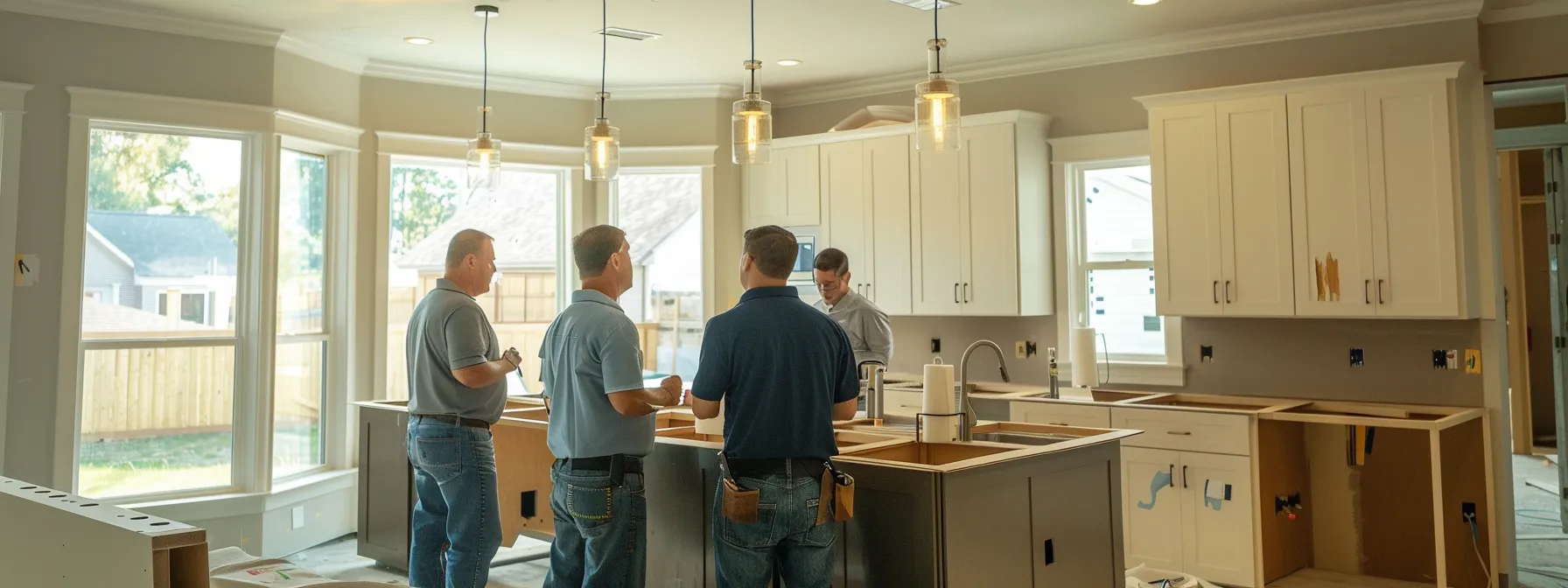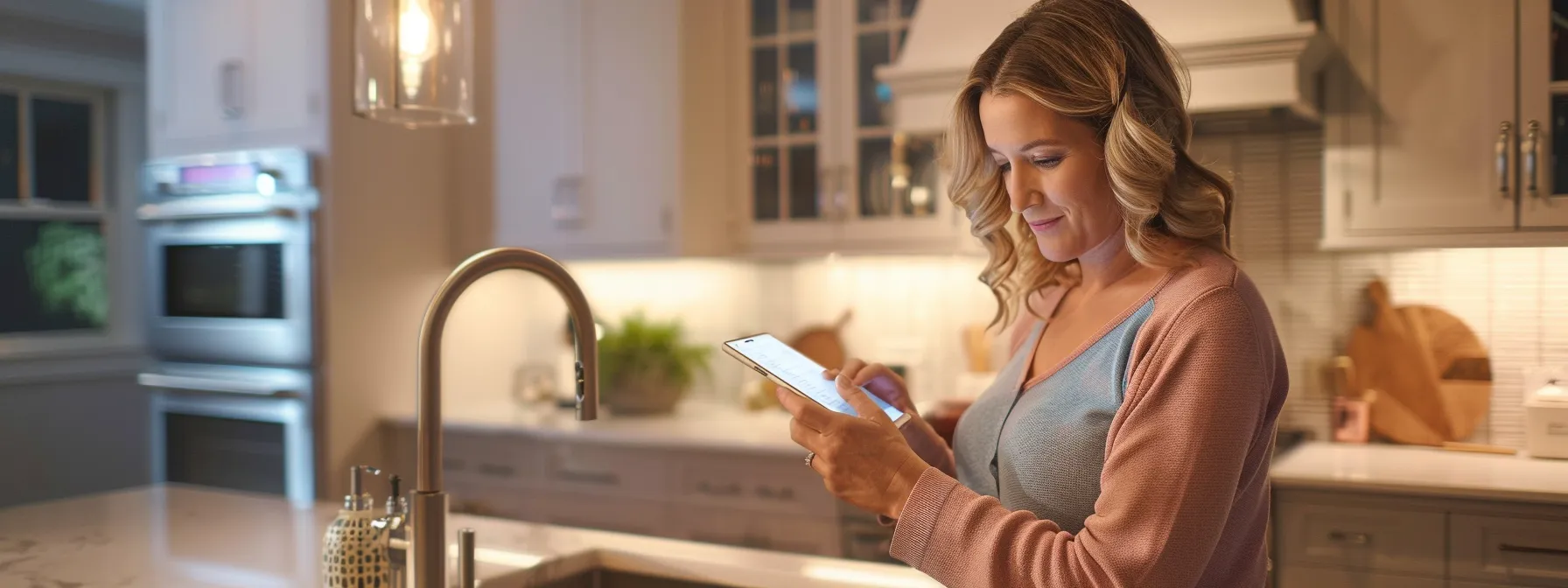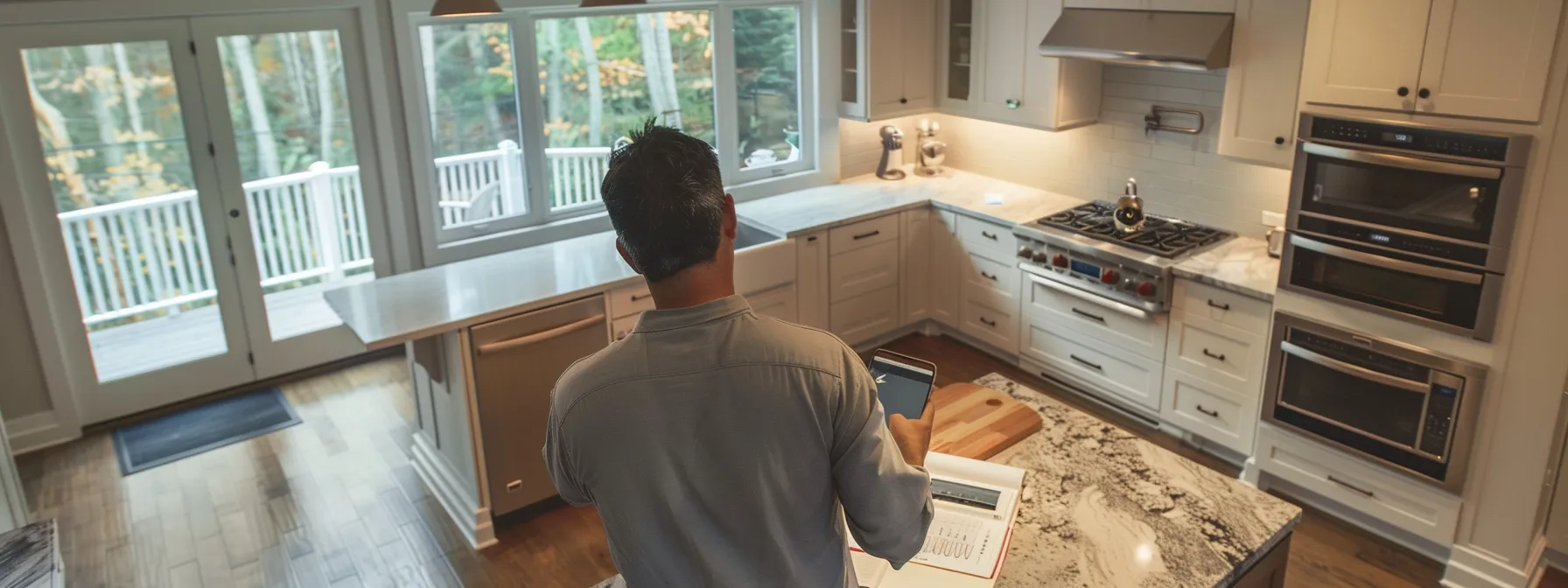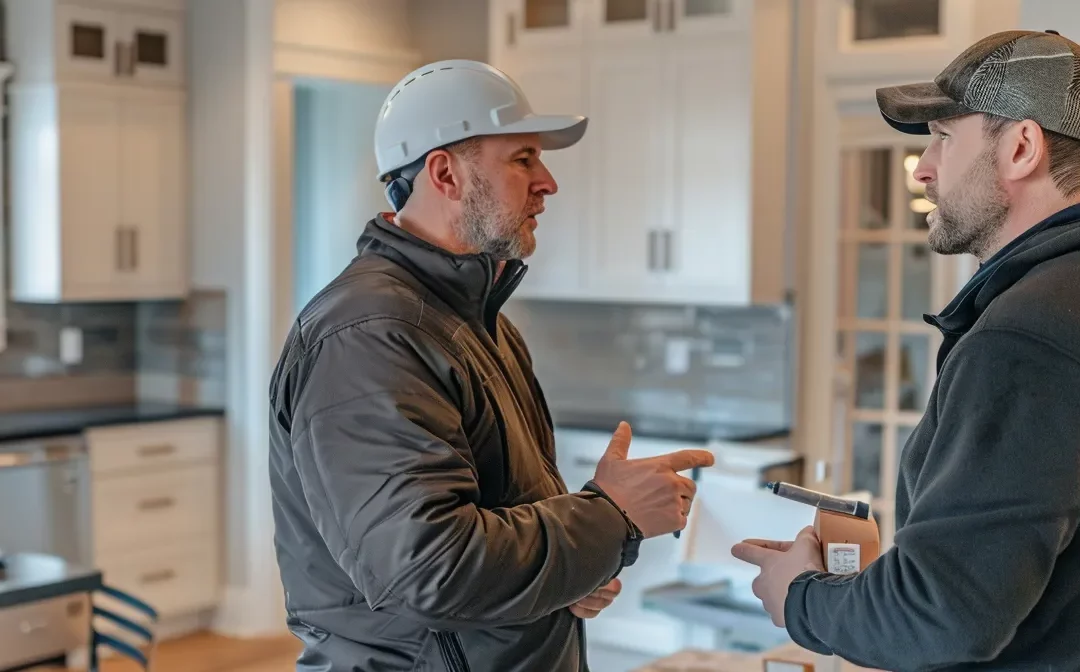Strategies for Budget Allocation in Kitchen Renovations
Kitchen renovations can be a significant investment, and careful budget allocation is essential for a successful outcome. Understanding how costs break down, including materials and labour fees, will help homeowners avoid surprises along the way. Collaborating with organizations like HIA Australia can provide valuable insights into accounting practices that ensure cash flow remains stable throughout the project. Establishing a clear spending plan while prioritizing renovation goals will lead to a smoother process and better results. Keep reading to learn essential strategies for effective budget allocation in your kitchen renovation.
Key Takeaways
- Establishing a clear budget is crucial for successful kitchen renovations
- Prioritize essential updates over extras to avoid overspending
- Set aside a contingency fund for unexpected expenses during the renovation
- Monitor expenditures consistently to maintain budget discipline throughout the project
- Evaluate living arrangements to minimize disruption during the renovation process
Decide How Much You Want to Spend, and Stick to It

Budgeting plays a pivotal role in kitchen renovations, impacting decisions on materials, design, and overall functionality. To effectively allocate finances, homeowners should first calculate their total available budget, incorporating expenses associated with materials such as quartz countertops and stainless steel appliances. Researching average costs for renovation projects in the local area grants valuable insights and helps in establishing realistic expectations. Prioritizing essential updates, such as plumbing and electrical work, over nice-to-have features can prevent overspending while ensuring that the most critical aspects of the kitchen are addressed. It is prudent to set aside a contingency fund to cover unexpected expenses that may arise during the renovation process. Ultimately, committing to budget limits brings peace of mind, allowing homeowners to focus on enjoying meals in a beautifully transformed room while maintaining financial security.
Calculate Your Total Available Budget for the Renovation
Determining the total available budget for a kitchen renovation involves assessing various factors, from the complexity of the design to expected labor costs. Homeowners should consider all components, including installations like a new stove and upgrades to the pantry, that can significantly influence overall expenses. By analyzing these elements, individuals can create a well-rounded budget that accommodates both essential features and desired enhancements.
Research Average Costs for Kitchen Renovation in Your Area
Understanding the average costs for kitchen remodeling in a specific area is crucial for effective budget allocation. Homeowners should consider the expense associated with materials like steel appliances and drywall installation, as these significantly impact the overall budget for home improvement. Engaging with local contractors or researching online resources provided by HIA Australia can provide valuable insights into typical costs, allowing for a more informed approach to planning a successful kitchen renovation.
Prioritize Essential Updates vs. Nice-to-Have Features
In a kitchen remodel project, discerning between essential updates and appealing extras is crucial to manage kitchen remodeling costs effectively. Prioritizing elements like structural improvements, such as reinforcing a wall or upgrading plumbing, is essential to ensure long-term functionality and safety. While attractive features, like custom wood cabinetry or high-end fixtures, add charm and style, they should come after basic renovations to prevent strain on the budget during a minor kitchen remodel.
Establish a Contingency Fund for Unexpected Expenses
Establishing a contingency fund is a critical component of any kitchen renovation budget. Homeowners should anticipate unforeseen expenses that may arise throughout the process, such as structural adjustments to the ceiling or updates to the floor plan. By dedicating a portion of the overall budget to this fund, individuals can ensure that they are prepared for surprises, allowing them to focus on enjoying their meals in a beautifully transformed space without financial stress.
Commit to Staying Within Your Budget Limits
Staying within budget limits requires discipline and careful oversight. Homeowners should consistently monitor their kitchen remodel costs against the average price of renovations in their area, using tools and reports provided by their general contractor to track spending effectively. By making informed choices, like opting for butcher block countertops instead of more costly alternatives, individuals can maintain financial control throughout the project.
- Set a clear budget from the outset.
- Track kitchen remodel costs regularly.
- Choose materials wisely to stay within budget.
- Consult the general contractor for guidance and adjustments.
- Conduct regular inspections to avoid unexpected expenses.
Setting a clear budget opens the door to informed choices in your renovation journey. Now, let’s explore how costs break down in kitchen renovations to ensure every dollar is well spent.
Understand How Costs Break Down in Kitchen Renovations

To effectively manage the intricacies of a renovation, understanding the cost distribution across various project aspects is crucial. A detailed breakdown facilitates the alignment of expenditure with priorities. Homeowners should consider allocating funds to essential areas such as labor, high-quality materials, and appliances prominently, especially when aiming for an average kitchen remodel that meets both functional and aesthetic standards. Beyond these core components, it is important to factor in expenses related to permits and professional fees, which are often easily overlooked. As quotes and estimates from contractors become available, adjusting these allocations allows for a more accurate representation of the necessary financial commitments, ensuring that income and credit resources can be utilized efficiently. Moreover, incorporating costs for ventilation and construction elements can play a significant role in the overall budget approach, providing clarity and enabling a more structured renovation process.
Break Down Your Budget by Project Aspects: Labor, Materials, Appliances
Breaking down the kitchen remodel budget into specific categories ensures homeowners allocate funds effectively. Labor typically represents a significant portion of the expenses, particularly during installations such as plumbing and electrical work, while materials like cabinets and countertops also require careful financial consideration. Appliances, including essential items like a dishwasher, should be factored in as well, as they can impact the overall functionality and appeal of the space when consulting a real estate agent about potential returns on investment.
By understanding these allocations, individuals can manage collateral effectively and consider options such as refinancing to accommodate their renovation goals without exceeding their financial limits.
Allocate Funds Proportionally to Each Area According to Priority
Allocating funds proportionally in a kitchen remodel ensures that critical areas receive appropriate financial support. Homeowners must prioritize their spending based on the importance of each element, such as investing in quality kitchen cabinets and essential appliances over less vital upgrades. This approach helps to balance kitchen remodel costs and can be particularly beneficial for those relying on a line of credit or managing their wage-based budget.
- Identify critical areas requiring funding, such as kitchen cabinets.
- Assess the importance of each component in the remodel.
- Allocate funds proportional to priority levels to avoid overspending.
- Use insights from contractors to guide financial decisions.
- Track expenditures closely to maintain budget discipline.
Factor in the Cost of Permits and Professional Fees
Incorporating the costs associated with permits and professional fees is a crucial factor in determining total kitchen remodeling costs. These expenses can vary significantly based on local regulations and the complexity of the project, impacting the overall budget. Understanding these necessary expenditures aids in alleviating potential financial strain and supports more accurate financial planning—especially for those monitoring their credit score.
- Identify necessary permits required for the renovation.
- Consult professionals to obtain clear fee estimates.
- Adjust the budget to accommodate these essential costs.
- Factor in these expenses early to avoid surprises later.
Adjust Allocations as Quotes and Estimates Come In
As quotes and estimates from contractors begin to arrive, homeowners should carefully review each line item to inform their financial strategy effectively. Adjusting allocations based on these insights can help manage costs more accurately, particularly for high-impact elements like granite countertops in a kitchen remodel, which often carry significant costs. Utilizing platforms like HomeAdvisor for comparison can provide valuable benchmarks for both kitchen and bathroom renovation expenses, ensuring that the project remains within its financial framework.
- Collect quotes from multiple contractors.
- Identify areas where costs may vary significantly, such as countertops.
- Adjust the budget allocations based on detailed estimates.
- Utilize resources like HomeAdvisor for accurate pricing benchmarks.
- Monitor expenses closely to maintain overall budget control.
Unforeseen challenges can arise during any renovation, often swaying the initial budget. Preparing a contingency budget ensures you are ready for anything that comes your way, keeping your project on track and stress-free.
Set Aside a Contingency Budget for Unexpected Expenses

Incorporating a contingency budget into a kitchen renovation plan is essential for navigating potential hurdles along the way. Homeowners should assess an appropriate percentage of their total renovation budget, often ranging from 10% to 20%, to accommodate unforeseen expenses. Understanding common issues, such as plumbing problems or structural inadequacies, can help in anticipating costs. Planning for unforeseen delays, whether due to supply chain disruptions or the need for adjustments in project scope, ensures a smoother process. Additionally, keeping contingency funds distinct from the main budget allows for clearer financial management, enabling homeowners to allocate resources effectively even when incorporating intricate elements like cabinetry and crown molding. This strategic approach ultimately enhances the overall kitchen renovation experience while safeguarding the home equity invested in the project.
Determine an Appropriate Percentage of Your Total Budget for Contingencies
Homeowners should carefully assess the percentage of their total budget that will be allocated for contingencies during a kitchen renovation. Typically, a range of 10% to 20% is advisable, as this can safeguard against unexpected costs that may arise. Understanding the implications on property value and considering factors like interest rates on a home equity line of credit can assist in making informed financial decisions that align with their renovation goals.
Understand Common Unforeseen Issues in Kitchen Renovations
During kitchen renovations, homeowners often encounter unforeseen issues that can significantly affect the cost breakdown of their remodeling projects. Common problems, such as hidden plumbing issues or outdated electrical systems, may surface once renovations commence, potentially leading to increased expenses and delays. Additionally, selecting tile for the new space can introduce complications if existing structures are incompatible, ultimately impacting the return on investment and raising concern over interest in the overall project scope.
Plan for Delays or Adjustments in Project Scope
Anticipating potential delays or changes during a kitchen remodel kitchen can save homeowners from unexpected financial strain. Adjustments to the project scope, such as opting for marble countertops instead of more affordable materials, can influence the overall price significantly. Homeowners should consider using a home equity loan to finance any unforeseen expenses, ensuring that their equity is maximized while maintaining control over the project’s budget.
Keep Contingency Funds Separate From Your Main Budget
Keeping contingency funds separate from the main budget is a strategic approach for effective financial management during kitchen renovations. This option allows homeowners to address unforeseen costs that may arise during tasks like demolition, plumbing adjustments, or installing a new sink without disrupting planned expenditures for elements such as cabinetry or flooring. By maintaining a clear distinction, individuals can navigate challenges in interior design with greater flexibility and assurance, ultimately fostering a smoother renovation experience.
With a contingency budget in place, homeowners can feel secure as they approach their renovation project. Now, it’s time to focus on what truly matters by prioritizing kitchen renovation goals and needs.
Prioritize Your Kitchen Renovation Goals and Needs

When embarking on a kitchen renovation, it is crucial to establish clear priorities regarding the updates required. Homeowners should begin by listing desired renovations, ranging from essential fixes to more desirable enhancements, such as installing an upgraded oven or opting for new wood flooring. Each potential update needs careful examination to assess its impact on the kitchen’s overall functionality, considering how it influences daily activities and workflow. Additionally, stakeholders should weigh the long-term benefits against immediate satisfaction to determine the true value of each improvement. Ranking the updates by importance and cost-effectiveness ensures that the kitchen remodeling budget is allocated strategically, enabling homeowners to achieve a beautiful and functional space while effectively managing labor costs and other financial commitments.
List Out All Desired Renovations, From Essential to Desirable
Homeowners should begin their kitchen renovation journey by comprehensively listing all desired updates, categorizing them from essential repairs to desirable enhancements. This process allows for a clear understanding of necessary improvements, such as fixing plumbing issues, alongside optional upgrades like installing a gourmet stove. By evaluating each item’s impact on functionality and aesthetic appeal, individuals can make informed decisions that align their budget with their renovation goals.
Assess the Impact of Each Update on Your Kitchen’s Functionality
Evaluating the impact of each proposed update on the kitchen’s functionality is essential for effective planning. Homeowners should consider how changes, such as upgrading appliances or altering the kitchen layout, enhance daily activities and overall workflow. By prioritizing updates that improve efficiency and accessibility, individuals can ensure their renovations lead to a more functional environment that meets both current and future needs.
Consider Long-Term Benefits vs. Immediate Satisfaction
Homeowners must evaluate the long-term benefits of kitchen renovations against the allure of immediate satisfaction. While opting for trendy finishes may offer short-term gratification, considering durability and functionality can lead to a more rewarding investment over time. Adopting a forward-thinking approach allows individuals to create a kitchen that not only meets current needs but also adapts to future lifestyle changes.
Rank the Updates in Order of Importance and Cost-Effectiveness
Ranking updates in terms of importance and cost-effectiveness requires a strategic approach to kitchen renovation planning. Homeowners must evaluate each project element based on its impact on functionality and the overall aesthetic of the kitchen. By assigning priority to those updates that enhance both efficiency and style, individuals can allocate their budgets more effectively, ensuring that crucial improvements receive the necessary financial support while remaining within their overall budget constraints.
Once the kitchen renovation goals and needs are established, it’s time to think about how to fund your vision. Crafting a solid payment strategy will ensure your dream space comes to life without financial strain.
Plan Your Payment Strategy for the Renovation

Establishing an effective payment strategy is integral to maintaining financial control during kitchen renovations. Homeowners should first explore various financing options, such as personal savings, loans, or home equity lines of credit, to determine the best fit for their individual circumstances. Each financing method carries specific terms and conditions that require careful consideration to avoid potential pitfalls. Aligning a payment schedule with project milestones ensures that funding flows appropriately, reflecting the completed phases of the renovation. Regular monitoring of payments alongside an adaptable budget promotes financial accountability, allowing homeowners to make necessary adjustments as the project progresses.
Explore Financing Options: Savings, Loans, Home Equity Lines of Credit
Homeowners should carefully evaluate their financing options, as this decision profoundly impacts their kitchen renovation budget. Utilizing personal savings provides a straightforward approach, eliminating interest payments and allowing full ownership of the project. Alternatively, loans and home equity lines of credit offer more significant funds but come with varying terms and interest rates that demand thorough consideration before proceeding.
Understand the Terms and Conditions of Your Chosen Financing Method
When selecting a financing method for kitchen renovations, homeowners must carefully review the specific terms and conditions associated with their chosen option. This includes understanding interest rates, repayment schedules, and any fees involved, as these factors can impact the overall cost of the project. An informed approach helps ensure that the financing aligns with the renovation goals and does not create undue financial strain.
It is advisable to compare different financing options to identify the most favorable terms available:
By evaluating these aspects, homeowners can select a financing method that offers financial flexibility throughout the renovation process.
Determine a Payment Schedule That Aligns With Project Milestones
Creating a payment schedule that corresponds with project milestones ensures that financial resources are allocated efficiently throughout the renovation process. Homeowners can structure payments to coincide with the completion of specific tasks, such as installation of cabinetry or plumbing fixtures, which helps in maintaining oversight and control over project costs. This strategy not only fosters accountability but also aligns financial commitments with tangible progress, enabling homeowners to manage their budget effectively while achieving their renovation goals.
Keep Track of Payments and Adjust Budget as Necessary
Monitoring payments throughout the kitchen renovation enables homeowners to maintain financial control and ensure that expenses remain within the allocated budget. Regularly reviewing financial commitments against actual spending allows for prompt identification of cost overruns or savings, facilitating timely adjustments to the budget. By staying proactive in tracking expenses, individuals can adapt their financial strategies as needed, ensuring that renovations proceed smoothly without compromising project quality or overall goals.
As the budget takes shape, it’s time to shift focus to your living arrangements during the renovation. Strategically planning where to stay can significantly reduce stress and unforeseen expenses, paving the way for a smoother project experience.
Mitigate Additional Costs by Planning Living Arrangements

Planning for living arrangements during kitchen renovations can significantly influence overall project costs and homeowner comfort. Determining whether to remain in the home during the renovation is a critical choice that requires assessment of both emotional and financial factors. If staying is not feasible, budgeting for alternative living arrangements becomes essential. The disruption of daily life, particularly when lacking access to a kitchen, necessitates addressing practical considerations such as meal preparation and nutrition. Homeowners can mitigate additional expenses by devising simple and cost-effective meal solutions, ensuring they maintain a balanced diet without incurring excessive costs during this transitional phase. This proactive strategy ultimately leads to a smoother renovation process and allows for a clearer focus on the project at hand.
Decide Whether to Stay in Your Home During Renovations
Homeowners face a critical decision when considering their living arrangements during kitchen renovations. Remaining in the home may lead to convenience and diminished disruption of daily routines; however, it can also result in stress due to ongoing construction activities. Conversely, temporarily relocating can provide a respite from the noise and chaos but requires careful financial planning to accommodate additional living expenses.
Factors to consider include:
- Construction duration and timeline.
- Noise and dust levels during renovation.
- Accessibility to kitchen utilities if staying in the home.
- Cost implications of temporary housing arrangements.
Budget for Alternative Living Arrangements if Necessary
Homeowners must carefully evaluate the financial implications of alternative living arrangements during kitchen renovations. If staying in the home is not feasible due to the disruption caused by construction, budgeting for temporary accommodation becomes essential. Planning for these additional costs ensures that the homeowners can manage both their renovation expenses and living expenses without experiencing undue financial strain.
Consider the Cost and Logistics of Daily Living Without a Kitchen
Homeowners must assess the implications of living without a kitchen during renovations, as this can significantly affect daily routines and overall comfort. They should plan for alternative meal preparation methods, such as utilizing nearby dining options or investing in compact kitchen appliances that can be used in other areas of the home. By anticipating these logistical challenges, individuals can maintain a degree of normalcy and ensure that their nutritional needs are met without escalating costs associated with takeout or temporary housing solutions.
Plan Simple and Cost-Effective Meal Solutions
During kitchen renovations, homeowners can simplify meal preparation by planning simple and cost-effective meal solutions. Utilizing appliances such as a microwave and toaster oven allows for quick and easy cooking options without the complexities of a full kitchen. Incorporating meals that require minimal preparation, like salads or wraps, helps maintain a healthy diet while avoiding the higher costs associated with frequent takeaway meals.
